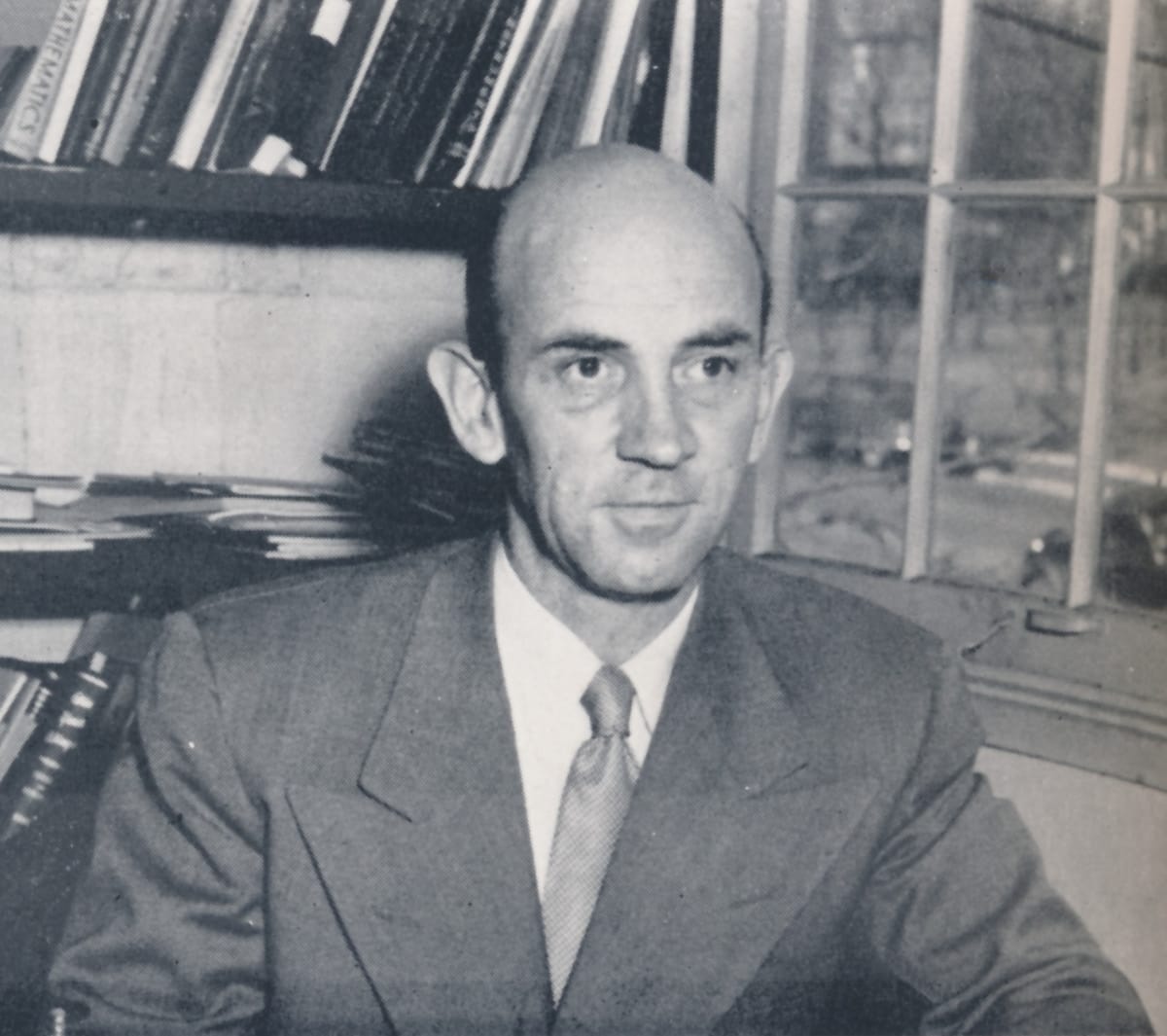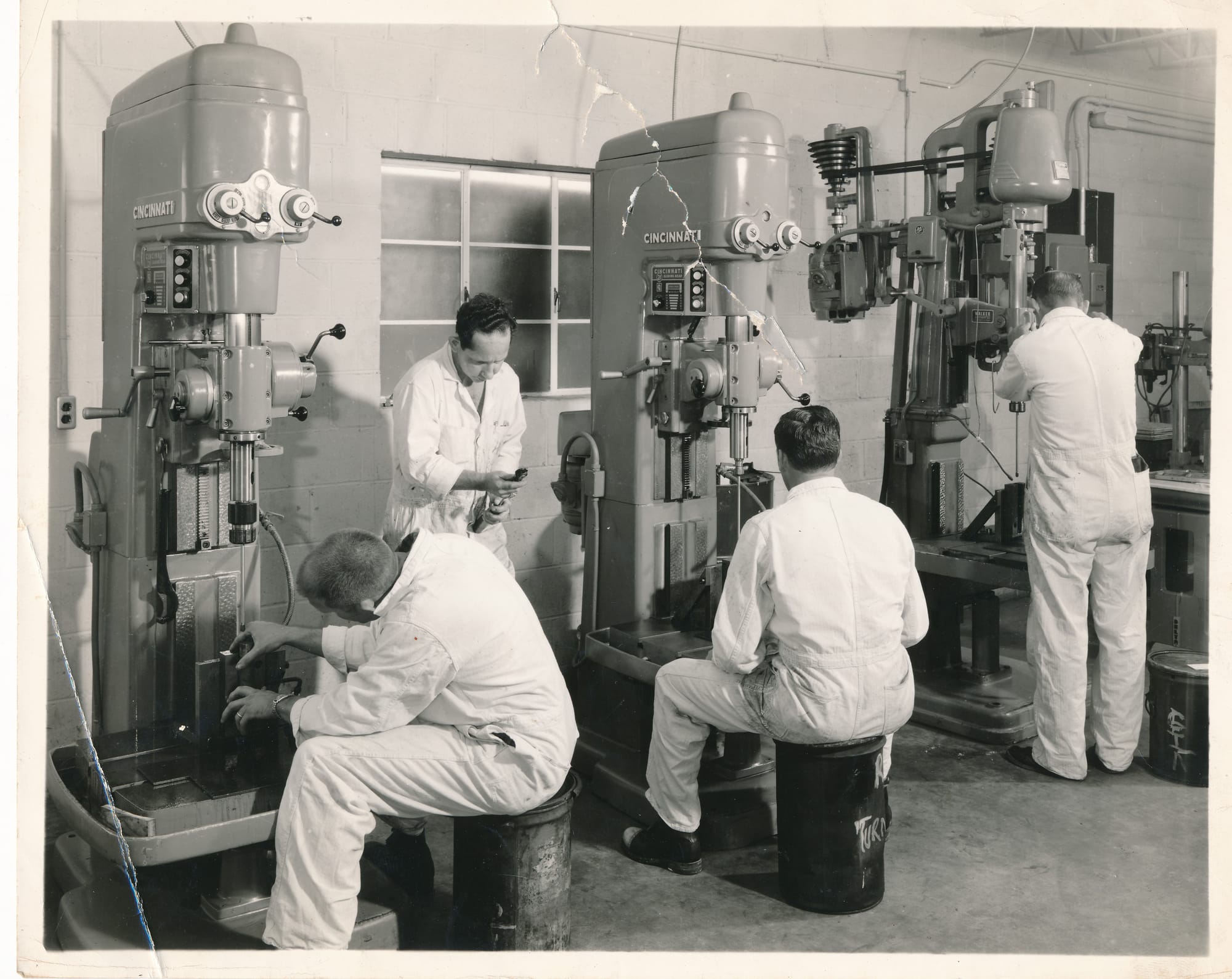Local Legends: Radio Activities
The late 1930s and early 1940s would prove to be a pivotal time in Albaugh’s life, starting with the family’s move to Oxford around 1937.

An industrial arts instructor, wartime professor, university administrator, land developer and subcontractor, Eugene M. “Bill” Albaugh administered the U.S. Navy’s Radio School during World War II and handled radioactive material for the Atomic Energy Commission in the 1950s.
On March 3, 1901 Albaugh was born to Ira M. Albaugh and Laura E. (Algeo) Albaugh. He grew up on the family farm near West Milton, a small town north of Dayton in Miami County. The family later moved to Brookville in Montgomery County where Albaugh attended school.
Albaugh found a home at Miami University, attending classes there starting in 1924. He began teaching industrial arts at Miami in 1926, later serving as a teacher at McGuffey School, though only halfway through his bachelor's degree coursework.
Continuing to teach and remaining on Miami’s faculty after his graduation in 1928, Albaugh met Dema Arvilla (Bayman) Albaugh, a recent Miami grad and school teacher from Greenville. The couple was married in Arvilla’s home in Reily Township on Aug. 1, 1931 and moved to the township.
Albaugh joined the Kappa Phi Kappa fraternity and also earned his masters degree from Miami in 1933. The Albaughs first child, Tonda Jean (Albaugh) Hicks, was born in Hamilton in 1939.
The late 1930s and early 1940s would prove to be a pivotal time in Albaugh’s life, starting with the family’s move to Oxford around 1937. Involving himself in the Oxford Community, Ashbaugh became a member of Kiwanis and the Informal Club, bowled in local bowing league and served as the director of the village traffic commission.
In 1940, he also started teaching student pilot training at Miami, under the auspices of the Civil Aeronautics Administration, overseeing the ground school on Miami’s campus. After completing the ground school, prospective pilots attended flight school held at Middletown Airport.
As part of the readiness buildup occurring in the United States prior to World War II, Miami created the Department of Aeronautics in June 1941, promoting Albaugh to associate professor and placing him in charge of the new department. This resulted in the creation of a four-year aeronautics program, first offered in 1942.
When the U.S. Navy established the Naval Training School in Oxford, Albaugh was appointed its director of education that same month. In that post, he oversaw the Naval Radio Training School and the Civilian Pilot Training and War Training Service programs. Nearly 7,500 service members, including a significant portion of servicewomen, graduated from these three programs during World War II.
With the conclusion of the war, Albaugh transitioned to become Miami’s veteran education coordinator, directing Veterans Administration programs and activities on campus from 1947 to 1952. With a massive influx of veterans attending Miami, fueled by the G.I. Bill, it fell to Albaugh to find them places to live in the midst of the post-war housing crisis.
Working with Foster Cole, assistant to the university vice president, Albaugh made arrangements to acquire prefabricated military structures from Fort Knox, KY and Willow Run, MI. These temporary structures were placed in the south part of the campus, creating “Veterans Village,” also known as “the Fertile Valley” with the Baby Boom well underway.
The Baby Boom included the Albaugh’s who had their second child, William “Bill” Albaugh, in 1946. Bill was later the drummer for the Oxford native pseudadelic rock group, the Lemon Pipers.
Albaugh developed a new subdivision to the north of Veterans Village in 1948 and his family had moved to a new home in the subdivision, at 525 South Main St., by the following year. Still an industrial arts instructor, Albaugh spent hours tinkering and building in the garage of his new home, which eventually developed into a laboratory where his business, Alba Craft, was born.
Outgrowing his garage, Albaugh built a shop at 10-14 West Rose Ave., not far from his home. Having first manufactured and sold specialized items such as fishing lures and cigarette filters, he soon moved into a much more specialized industry – power.

Albaugh took a two year leave of absence from Miami in 1952 and subcontracted with National Lead of Ohio, a primary contractor for the Atomic Energy Commission and operators of the Fernald Feed Materials Production Center in Ross and Crosby Townships. At Fernald, National Lead refined uranium for use in nuclear weapons production.
Alba Craft’s specific role was to machine uranium processed by Fernald for use at nuclear power plants at Savannah River, South Carolina and Hanford, Washington. Albaugh and his handful of employees would end up machining several hundred tons of uranium between 1952 and 1957.
Albaugh resigned from Miami at the conclusion of his leave of absence in 1954 and became president of Alba Craft Laboratory Inc. when it was incorporated the following year. Arvilla served as vice president-treasurer of the company and J.R. Harrington became the secretary.
Alba Craft advertised its services as including milling, turning, grinding, centerless grinding, drilling and thread rolling, as well as selling carbide tipped masonry drill bits marketed as ALBA Masonry Drills.
The uranium work came with hazards. In July 1955, firefighters spent over an hour battling a fire in a steel drum at Alba Craft that they had great difficulty extinguishing. Working with uranium also required Albaugh to follow specific safety and decontamination procedures. Although he adhered to these processes, they largely only required contaminants to be swept out the back door of the shop for absorption into the ground.
In 1958, Albaugh developed a rare heart condition and traveled to Houston, Texas to undergo the surgery required to treat it. Although the surgery was successful, Albaugh died during a second surgery required to correct a kidney complication on Nov. 19, 1958 at Methodist Hospital.
Following her husband’s death, Arvilla began managing the shop before selling the company to H. Norman Inderhees in 1973, though she stayed on as an advisor. Arvilla died on March 15, 1981 and was buried with her husband in Oxford Cemetery.
The Alba Craft shop was included in the Atomic Energy Commission’s Formerly Utilized Sites Remedial Action Program in 1993 following testing conducted in 1992. Further testing found that Albaugh had taken work home with him and his former family home and a few adjacent structures were included in the program as well.
The shop structure, which was an embroidery shop at the time, was demolished and a large amount of soil was removed from all of the contaminated sites. Remediation was completed in 1995 and a new structure now occupies part of the site.
Brad Spurlock is the manager of the Smith Library of Regional History and Cummins Local History Room, Lane Libraries. A certified archivist, Brad has over a decade of experience working with local history, maintaining archival collections and collaborating on community history projects. He also serves as a board member for Historic Hamilton Inc. and the Butler County Historical Society.




